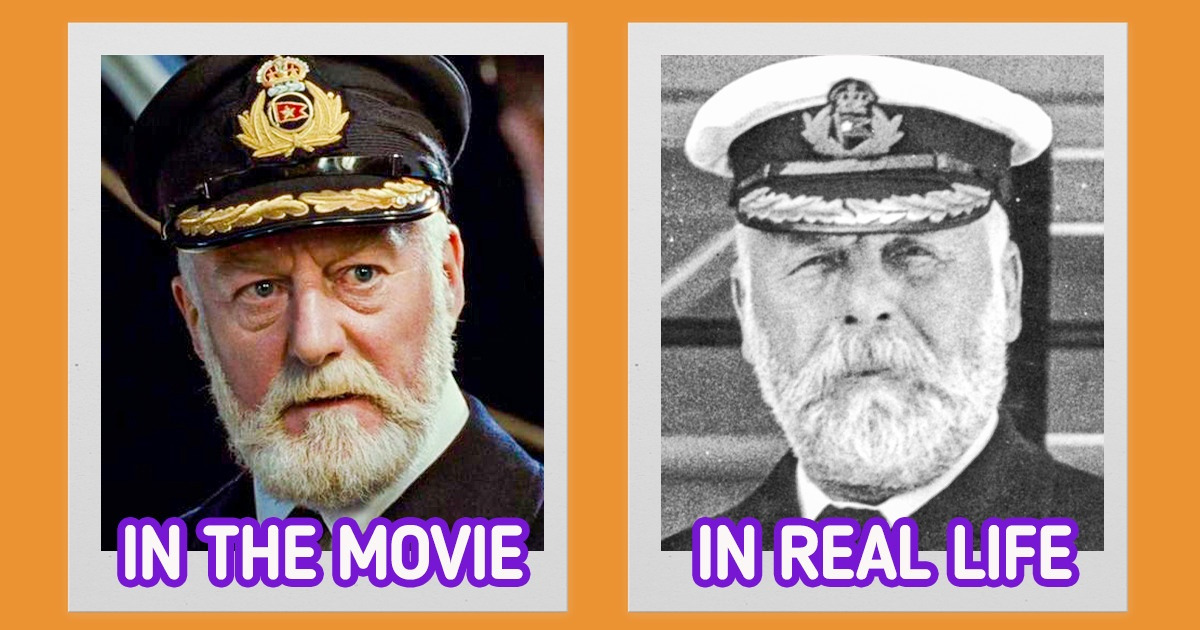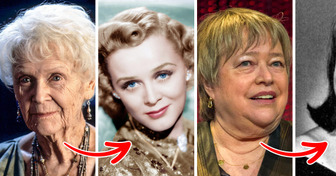Pierce Brosnan’s Wife Stunned Everyone With Her Dramatically Altered Appearance


Reality is stranger than fiction, we know it and Titanic is not an exception. The sinking of this giant was an unfortunate milestone in the history of modernity. Only 700 of the 2,200 people who boarded the promising, state-of-the-art cruise ship survived. And although several movies have been filmed about this catastrophe, it was James Cameron who managed to capture everyone’s heart by inventing the love story between Leonardo DiCaprio and Kate Winslet. But not everything was a fairy tale in the director’s story, several characters in the movie were inspired by passengers of the ocean liner who lived the event in reality.
At Now I’ve Seen Everything, we are fans of finding fun movie facts, so we researched and found these 11 people who were on the Titanic and actually appeared in 1997 movie as well.
Margaret Brown, who in the movie lent Jack her son’s suit for dinner with the aristocrats, was a real passenger on the Titanic. She was a philanthropist, public figure, and activist. She was always thinking of others. Margaret helped passengers into the boats and refused to get to safety until the very end. After this, she argued with the boat’s major, prompting him to return to the scene of the disaster to pick up the drowning people, unsuccessfully.
When the passengers were picked up by the ocean liner Carpathia, Margaret even organized a committee to raise funds and provide psychological assistance to survivors of the disaster. In recognition of her work and helpful personality, she was nicknamed “The Unsinkable Molly Brown.”
The Titanic was commanded by 62-year-old Edward Smith, who grew up in a family of common laborers and left school at the age of 13 to become an apprentice in 1867. Smith was the White Star Line’s most experienced captain, with more than 40 years of experience. The voyage on the Titanic was supposed to be the man’s last before retiring.
At the time, there was a widespread belief that floating ice posed no great danger. And in 1907, the future captain of the Titanic even said in an interview that he could not imagine a situation “in which a modern ship could sink.”
Joseph Bruce Ismay was president and director of the White Star Line of steamships. Having a desire to outdo his competitors, he decided to create a luxurious and unparalleled ship, and so he ordered the number of lifeboats on the Titanic to be reduced from 48 to 16.
After being rescued from the sinking ship, Ismay was criticized by the press for abandoning the Titanic while there were still women and children on board. He lived to the end of his days with the stigma of a coward.
Ismay’s negative image is still invariably used in cinematography. James Cameron’s movie was no exception. When a consultant to the director on the Titanic story asked him to re-examine the character of this man, the director decided not to change the storyline.
Thomas Andrews was the designer of the Titanic and was present on the ship’s maiden voyage to supervise his work. After the collision with the iceberg, Andrews was one of the few who learned of the cruise ship’s impending sinking.
He persuaded passengers (who were reluctant) to board the boats and checked the cabins, enticing people to put on life jackets and come on deck. Andrews did not survive. The man was last seen shortly before the Titanic sank completely. Andrews was tossing cots from the deck, hoping that people in the water could use them as floats.
William Murdoch had many years of sailing experience and was the Titanic’s first officer. He was on watch the day of the tragedy and tried to avoid the collision, but the crew became aware of the iceberg too late and, 37 seconds after it was discovered, the accident occurred.
The complex and ambiguous portrayal of Murdoch in Cameron’s movie provoked outrage from his nephew. The film’s creators personally went to his hometown and donated money to a memorial fund in Murdoch’s honor.
Frederick Fleet, along with a colleague, was the lookout on the night of the tragedy and the first to notice the iceberg. Later, when giving testimony to the U.S. and British commissions of inquiry into the disaster, Fleet said that, if the lookouts had been given binoculars on that trip, he would have noticed the iceberg earlier.
However, some experts surmise that even with binoculars the lookouts would not have been able to spot the iceberg in time, considering the nighttime conditions. Fleet was assigned to row the same boat as Molly Brown and was saved.
Charles Lightoller was the second mate of the Titanic. When the liner began to sink, he jumped off the ship, miraculously avoiding being sucked into the vent. He climbed into an overturned collapsible dinghy, in which, in addition to himself, there were other men. Lightoller showed them how to rock the boat so that it would not sink. Not all of them could wait for the boat that picked them up at dawn: some simply fell overboard from exhaustion.
Lightoller was the senior survivor and, after the disaster, offered significant improvements in passenger transport on the ship. He insisted on increasing the number of lifeboats, recommended conducting training in their use, establishing 24-hour radio communication with each ship, and constantly transmitting signals about dangerous areas in terms of weather conditions.
Archibald Gracie IV was a writer and amateur historian who traveled on the Titanic as a first-class passenger. When the collision occurred, he assisted Second Officer Lightoller in getting women and children into the boats. After the ship sank, he was saved in an overturned collapsible dinghy. Immediately after returning to New York, Gracie began writing a book about his voyage on the Titanic, which became a valuable source of information for historians and researchers of the disaster.
His health was severely affected by hypothermia and, less than 8 months after the tragedy, he died due to complications from diabetes. The sinking of the Titanic left an indelible mark on Gracie, and it is reported that his last words were “We have to get them on the boats. We have to get everybody on the boats.” He was the last survivor to leave the ship.
On the day of the tragedy, John “Jack” Phillips, the Titanic’s radio operator, was swamped with telegrams from passengers, as just before, the radio transmitter had broken down. Phillips, tired, failed to deliver to the captain some warnings from nearby ships about icebergs. He did not even hear the last message from the nearest vessel, which might have helped avoid a collision.
When disaster struck, the captain ordered the radio operators to send a distress signal. And Jack Phillips didn’t stop transmitting for a minute until the transmission room flooded and the transmitter cut out. Phillips could not be saved. Harold Bride, who worked with Jack, recalled, “I learned to love him that night and suddenly felt a great reverence to see him standing there, glued to his work, while everyone else was furious. I will never forget Phillips’ work for the last fifteen minutes.”
The movie scene showing an elderly couple embracing during the sinking of the Titanic is etched in our memory. And these touching characters had real-life prototypes: Ida and Isidor Straus. The husband and wife were very close, and when businessman and politician Isidor had to be absent due to his work, every day they’d send letters to each other.
Reportedly, the Titanic’s officer, considering the couple’s advanced age, was willing to allow them both to board a lifeboat, but Isidor refused and decided to share the fate of the other men on the ship. He tried to get his wife into the boat, but Ida did not want to leave her husband on the sinking ship. “We have been together for many years. Where you go, I go,” Ida told him. The elderly couple was last seen standing arm in arm on one of the ship’s boat decks.
The scene in the movie, where, despite the panic over the sinking of the Titanic, the orchestra continues to play music, left few people indifferent. This episode is based on a true story. Wallace Hartley was the bandmaster of the orchestra on the liner, and after the collision with the iceberg, he and other musicians began to play works to keep the passengers calm.
Many witnesses reported that the orchestra continued to play until the ship sank. None of the musicians survived. When rescuers found Hartley’s body, he was tied up with his violin case. Later, in 2006, the violin itself was found, on the back of which was written a phrase from his fiancée: “For Wallace on the occasion of our engagement from Maria.”
How many times have you seen Titanic? Do you think there was enough room on the board for Jack to be saved?











